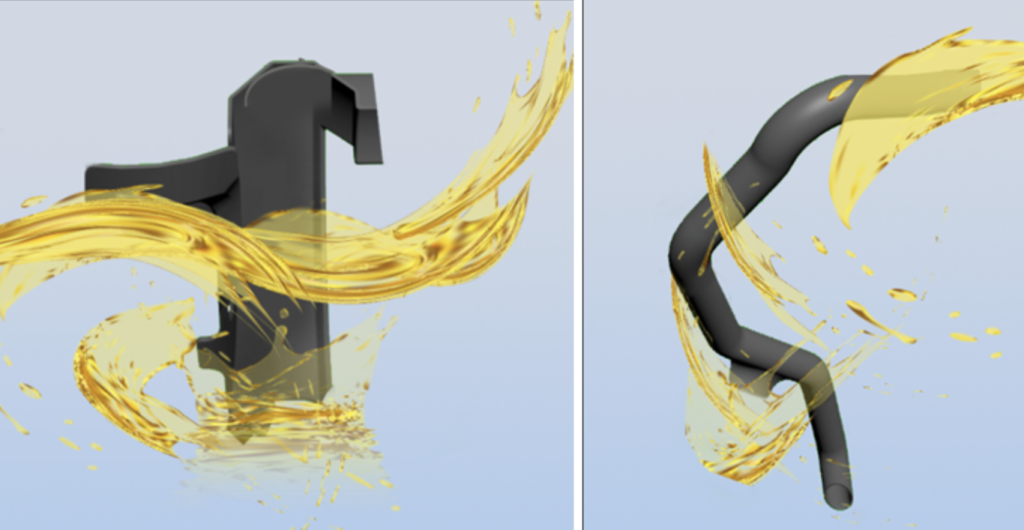3D printing material developer and service provider CRP Technology has developed end-use parts for several exotic limited edition sports cars, it has been revealed.
Designed as part of the ‘Iconic Brands’ initiative, these retaining duct, pipe, wiring system, and aero components are said to be lighter, more durable, and yield greater downforce, in a way that makes them better capable of withstanding high-speed applications, and enables them to make supercars quicker on-track.
While the firm hasn’t disclosed the identity of the clients behind them, it says 3D printing the parts from Windform RS has helped users unlock “outstanding endurance and aerodynamic performance.”

CRP Technology’s motorsport pedigree
Founded in the heart of Italian Motor Valley in 1996, CRP Technology is primarily known as the developer of Windform materials. However, what’s less well-known is that the company was established by CRP Meccanica, the successor to Roberto Cevolini & C, a business that initially focused on creating F1 parts.
Thanks to nearly three decades of investments in R&D, as well as this inherited automotive expertise, CRP Technology has been able to develop several 3D printing materials capable of withstanding harsh environmental conditions.
Recent examples of these include Windform XT 2.0 for high-speed sintering, the flame-retardant Windform FR2 and Windform RS, a carbon fiber-filled material that yields heavy-duty parts. In the past, the firm’s materials have been used to create everything from reinforced 3D printed drones to Windform-based satellites, and while it continues to address the needs of users in a variety of industries, they have proven particularly well-suited to automotive.
In fact, CRP Technology says its engineering expertise and motorsport knowledge allow it to deliver functional components that are more reliable, lightweight and liquid resistant than printed competitors. As a result, the company’s premises in the US, Italy and Dubai are now said to create parts for multiple automotive leaders, via its suite of manufacturing services.

Stronger than aluminum parts?
To celebrate the one-year anniversary of the Windform RS’ launch, CRP Technology has provided an insight into its Iconic Brands project. Specifically, the firm says it has “matured a number of important involvements” with high-profile manufacturers, through which it produced 50,000 complex parts for automotive, last year alone, a 10% increase on 2020.
Modern vehicles are operated by various automated controls that necessitate the coexistence of electronics, fluids and energy cables, capable of operating in tight spaces. As such, CRP Technology considers Windform RS to be ideal for meeting high-end automotive needs, especially as it can be used to create standalone retaining systems, housing-to-power cables reaching an 800W voltage, and aero parts that can easily be quality-assessed.
Over the last year, the company has worked with partners to 3D print several end-use components from the material, ranging from oil circuit supply and intake piping, the latter of which outperformed an aluminum version in temperature, fluid environment and vibration testing that took place inside a crankcase.
In another R&D project, CRP Technology also helped develop a duct system that’s capable of lasting over endurance races like the 24 hours of Le Mans. Thanks to the thermal resistance qualities of Windform RS, the firm says the part has now endured through months of continuous usage at speeds of up to 340 KM/h, without suffering from deformation or damage.

Tackling aero drag with 3D printing
When it comes to the adjustable winglets fitted to F1-esque supercar drag reduction systems that open to reduce drag and improve their speed and stability, reliability is key. On the road, such louvers (as well as splitters), must regularly perform at speed, and using Windform RS, CRP Technology has managed to create these parts, which once fitted, ensure a high aerodynamic load.
On other models, the company has also deployed its material to 3D print vortex generators, external body parts that cause airflow over the car to become more turbulent, and the creation of ‘active aerodynamic’ elements.
When fitted to next-generation supercars, these are triggered either automatically or semi-automatically, to improve vehicle performance or fuel consumption. Leveraging Windform RS, CRP Technology has now worked with an unnamed partner to create more robust aero-enhancing DRS winglets, capable of withstanding stresses caused by rough asphalt or thermal variations.
Though typically made entirely from carbon in an extremely time demanding and pricey manufacturing process, the company has now 3D printed them using its material instead. This, it says, is because Windform RS has a “peculiar resistance to temperature excursion” and a smoothness that enables it to “fulfills its mission” no matter how much hot air it is subjected to.

To stay up to date with the latest 3D printing news, don’t forget to subscribe to the 3D Printing Industry newsletter or follow us on Twitter or liking our page on Facebook.
While you’re here, why not subscribe to our Youtube channel? featuring discussion, debriefs, video shorts and webinar replays.
Are you looking for a job in the additive manufacturing industry? Visit 3D Printing Jobs for a selection of roles in the industry.
Featured image shows a silhouette of a supercar. Image via CRP Technology.



